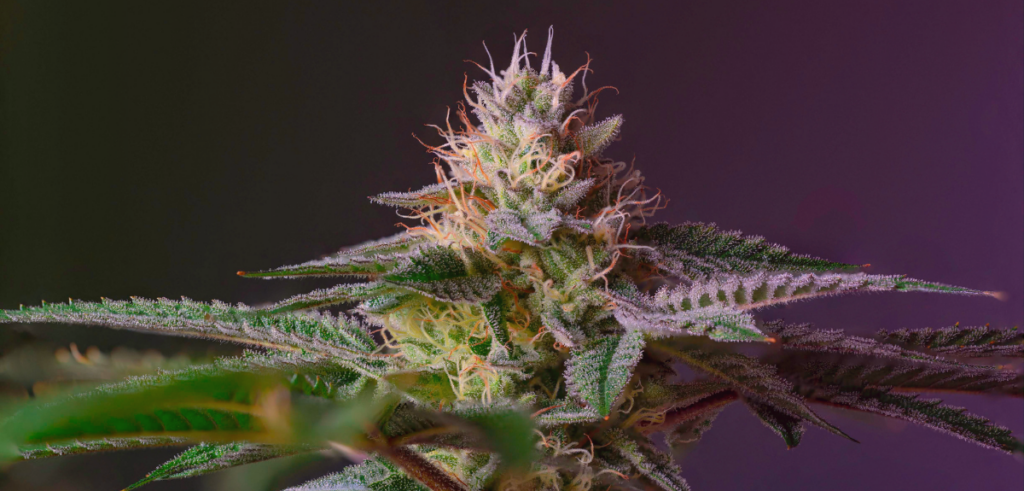Chronic pain is a harsh reality for millions around the globe, lingering long after injuries have healed or as part of ongoing conditions like arthritis or nerve damage. It’s a significant challenge that can really take a toll on everyday life. Often, the usual remedies—like painkillers, physical therapy, or even surgery—might not cut it, or they bring along a bunch of unwanted side effects.
Enter cannabis—a promising, natural option. With its pain-relieving properties, especially from cannabinoids like THC and CBD, marijuana is known to offer a gentler alternative that works naturally with your body’s systems. For people looking for organic comfort—weed can be a game-changer for people living with chronic pain. Let’s explore everything from the science behind how weed works to help manage pain to real studies of people finding relief. Whether you’re new to cannabis or just looking for better ways to address pain, we’re here to guide you with the insights you need to make the best decision for you.
What Is Chronic Pain?
Chronic pain lasts much longer than expected, often persisting long after the typical healing period for an injury or illness. It’s different from acute pain, which is temporary and usually fades as you heal. Chronic pain can continue for months or even years and often arises without an apparent injury, making daily activities challenging. According to the CDC, more than 51 million Americans, or 20.9% of the population, reported experiencing chronic pain, highlighting just how many people struggle with it.
Traditional ways of dealing with chronic pain—like consuming over-the-counter meds, using prescription opioids, physical therapy, or even surgery—don’t always cut it. Plus, they can come with their own set of risks, like side effects or the potential for dependency. As more people start to see the limits of these conventional treatments, they’re turning to alternatives like cannabis. With its natural pain-relieving properties and fewer side effects, marijuana is opening up a promising new path for those dealing with chronic pain.

Cannabis Basics
Cannabis is composed of several components that contribute to its effects: THC (tetrahydrocannabinol), CBD (cannabidiol), and terpenes. THC is the primary psychoactive component that gives users a “high,” while CBD is known for its therapeutic benefits, such as reducing anxiety and pain, without the psychoactive effects. Terpenes, the aromatic compounds found in many plants, including cannabis, influence its scent and can also affect its therapeutic properties.
The effects of cannabis can also vary depending on the strain. Indica strains are typically associated with a body high that can help reduce pain and promote sleep, making them ideal for nighttime use. Sativa strains usually provide a more energizing experience, enhancing creativity and focus, which makes them better suited for daytime use. Hybrid strains mix these effects, tailoring their combination of THC, CBD, and terpenes to address specific symptoms or needs. Each strain’s unique profile influences how it interacts with the body’s endocannabinoid system (ECS) and potential therapeutic benefits.
Cannabis and Pain Management
There’s a lot of buzz around how cannabis can help people dealing with chronic pain. These compounds in marijuana are stars at tackling pain by interacting with the body’s pain pathways to dial down discomfort and inflammation. THC does more than just relieve pain; it also adds a psychoactive kick that can help mellow out the stress and anxiety that often come with chronic pain, making you feel more relaxed and at ease.
On the flip side, CBD is the chill cousin in the cannabis family—it doesn’t get you high, but it’s a powerhouse when it comes to fighting pain, particularly with inflammation and nerve-related discomfort. CBD’s ability to offer relief without the psychoactive effects makes it a go-to for those who want to keep a clear head while easing their symptoms.
These components interact with the body’s ECS, which helps regulate various functions such as sleep, appetite, pain, and immune system response. THC and CBD bind to receptors in the ECS, modulating these functions and often leading to therapeutic benefits. The interaction can vary significantly depending on the strain’s ratio of THC to CBD and which terpenes are present.

Methods of Cannabis Consumption for Pain Relief
When it comes to managing chronic pain with cannabis, the method of consumption plays a crucial role in how effective it can be. Each method delivers the active compounds of weed differently, impacting how quickly you feel relief and how long it lasts. Here’s a breakdown of some standard ways to consume marijuana, along with their pros and cons:
Smoking and Vaping
Pros
One of the benefits of consuming through smoking or vaping is the quick onset of effects, usually within minutes. These methods allow for immediate relief, making them ideal for situations where fast-acting results are needed. Additionally, smoking or vaping gives you easy control over the dosage, as you can adjust how much you inhale to match your desired level of effect.
Cons
There are some drawbacks to smoking or vaping. One concern is the potential respiratory issues that can arise from inhaling smoke, which might not be ideal for everyone, especially those with lung conditions. Additionally, the effects of smoking or vaping tend to wear off more quickly compared to other methods, meaning you might need to consume more frequently to maintain the desired level of relief.
Edibles and Tinctures
Pros
Edibles and tinctures offer several advantages, particularly for those dealing with chronic pain. One of the main benefits is their longer-lasting effects, providing extended relief that can be especially helpful for managing ongoing discomfort. Additionally, these methods are discreet and easy to consume, allowing you to enjoy the benefits of cannabis without the need for smoke or vapor.
Cons
One downside is the longer wait time for the effects to kick in, ranging from 30 minutes to 2 hours. This delay can make it harder to gauge when you’ve reached your desired level of relief. Additionally, dosing can be tricky with edibles and tinctures, as it’s more challenging to measure the right amount, increasing the risk of overconsumption.
Topicals and Patches
Pros
Topicals and patches offer the advantage of targeted relief. They allow you to apply cannabis directly to areas of pain without affecting the rest of your body. This localized approach can be beneficial for managing specific pain points. Additionally, patches provide consistent delivery of cannabinoids over a prolonged period, ensuring steady relief throughout the day or night.
Cons
While the effects are generally localized, meaning they target specific areas of pain, they may not be effective for more widespread discomfort. Additionally, they may provide a different level of relief for severe pain than other methods, making them better suited for milder or more focused pain management.
Every method has perks and downsides, so the best choice depends on what works for your pain and lifestyle. Whether you’re into the quick relief from smoking or the long-lasting effects of edibles, knowing your options helps you pick what’s right for you when it comes to managing chronic pain with plants.
Patient Studies: Managing Chronic Pain With Plants
Real-life stories of folks using cannabis for chronic pain show just how much of a game-changer it can be, especially when dealing with a bunch of other health issues at the same time. In a recent study, nearly half of the participants turned to cannabis mainly to manage their chronic pain. But they weren’t just battling pain—many were also dealing with things like stress and anxiety.
These patients experimented with different strains and methods to find the best. Some leaned on high-CBD strains to tackle pain and anxiety without getting the typical THC high, while others saw a balance of THC and CBD gave them just the right mix of relief and relaxation. They also played around with different ways to consume cannabis—some liked the quick hit from smoking or vaping, while others preferred the longer-lasting effects of edibles or tinctures. These stories show how flexible cannabis can be, letting people find the right fit for their pain and other symptoms.

Choosing the Right Cannabis Product
When choosing a cannabis strain for pain relief, it’s all about matching the strain to your specific needs. For deep, chronic pain or when you need to unwind, an Indica-dominant strain with its calming, body-focused effects might be your best bet. On the other hand, if
you need to stay sharp and active, a sativa or sativa-dominant hybrid offers more uplifting, energizing effects. Hybrids provide a balanced experience, giving you the best of both worlds depending on the blend.
Dosing is crucial to getting the most out of your cannabis for pain management. Starting with a low dose and gradually increasing it allows you to find that sweet spot where you get relief without going overboard. This approach helps avoid unwanted effects like grogginess or anxiety, ensuring a smoother experience. And if you’re unsure where to start, our friendly budtenders at Stairway Cannabis are always here to help you find the perfect strain and dosage for your needs.
Get What You Need at Stairway Cannabis
Cannabis offers a promising alternative for managing chronic pain, with the potential to provide relief tailored to individual needs. The right strain and dosage can significantly affect your pain management routine. It’s important to consider all factors and consult with medical professionals to ensure you’re making informed choices. As cannabis continues to gain recognition as a viable pain management solution, its future in this area looks bright.
At Stairway, we’re here to help you find the right strain for your needs, offering a wide variety at everyday low prices. If you’re interested in learning more, our dedicated medical marijuana program is designed to guide you every step of the way. Let’s explore how cannabis can be a valuable tool in managing chronic pain together.
Key Takeaways
- Cannabis for Pain Relief: Cannabis is a natural alternative that can really help with chronic pain when other treatments don’t quite cut it.
- Find Your Perfect Fit: Picking the right strain and dose is key—Indicas for deep relaxation, Sativas for staying active. Start low, go slow, and find what works for you.
- Stairway’s Got You Covered: At Stairway Cannabis, we’ve got a variety of strains at everyday low prices. Our team is here to help you find the perfect match for your pain relief journey.